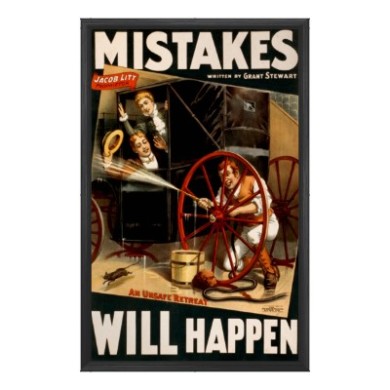I’ve been teaching at a film school for over five years now, and working with filmmakers has been an eye-opener. I’ve learned a lot, and I hope I’ve helped some filmmakers along the way.
One thing I think screenwriters and playwrights share is the need to create compelling, honest characters, and yet it’s one of the most common areas in which I see scripts fall flat. This can be a real struggle for early career writers.
So: Are your characters boring? Oh, don’t give me that look. You know what I mean. Bland, flavorless characters; characters whose predictability could be spotted by a nine-year-old; characters that are carbon copies of archetypal characters of the past. They are all too common.
How are memorable, believable, intriguing characters made? While there’s no one right way, I can give you some pointers to help you, early career playwright or screenwriter, find your own process.
1. Imagine your characters as personalities, not as a collection of visuals.
This one is a particular issue for filmmakers. Filmmakers tend to be visual people, and I often see scripts that approach a character from the outside, and stop there. The writer knows what she wants the scene to look like, but hasn’t thought any more deeply about it than that. When you think about your characters, think in more detail about personality traits. Who is this character? Why does he do what he does? What does he want? Which leads me to:
2. Think of your characters as real people with needs and desires.
I often see characters that are treated as nothing but events in the life of the main character. Imagine your characters as real people with goals, hopes, dreams, fears. What does this person want? What does she want from the other character(s) in the scene? What is her opinion about the other character(s) in the scene, what’s happening around them, what might happen, etc? I see this particular “event-in-the-life” type of sloppy writing shine out in its fullest glory when people write women and people of color.
3. Write better women and people of color.
The amount of stereotypical, flat, and unrealistic women and people of color in film and theatre could, if turned into gold, buy every man, woman, and child who ever lived a copy of the latest version of Final Draft. It’s depressing. Even more depressing is the fact that this isn’t the sole province of white male writers. When writing supporting characters that are women or people of color, treat these characters as real people with stories of their own—feelings, opinions, needs, desires—and not just an event in the life of the main character. And here’s a thought: consider writing more pieces with a woman or a person of color AS the main character. I see much more diversity in main characters in theatre than in film, but we could use much more in both. (More stories from more diverse perspectives, please, with extra awesome.) BTW: One more hooker/call girl character and I will scream. Despite what you see in film, 57% of all women between the ages of 18 and 30 are not hookers. Crazy, right? I KNOW. Additionally, I could easily write a 1000-word blog post just about stereotypical writing for people of color. Be better.
4. People are never generic, always specific.
So stop creating generic characters. Stop throwing generic characters into scenes just to advance the narrative and start thinking of characters as essential parts of the equation of storytelling. I promise you that you can, with a little more thought, advance your narrative just as well—actually, better—with an interesting bartender as easily as a generic “bartender.” What’s more, an interesting, complex character can take your narrative in unexpected directions. Allow your characters to be specific people and see where that takes you.
5. The stronger your antagonist, the stronger your protagonist.
This one is more germane to screenwriting than playwriting, but this basic piece of advice should apply to all characters you create, whether they fall into the protagonist/antagonist structure or not. Make sure your antagonist isn’t a total screaming douchebag from the get go. It cheapens your protagonist’s eventual victory (or defeat, if that’s where you’re going). Make your antagonist a worthy opponent and the end will be much more satisfying. At the risk of sounding like a pretentious asshole (SPOILER ALERT: too late) take a tip from Shakespeare—all of his villains have some redeeming qualities, and all of his heroes have some flaws. People are complex, and if you want your characters to be believable, they must reflect that. An antagonist who has a point and makes some sense in his opposition to the protagonist will provide a much more satisfying conclusion.
6. Show, don’t tell.
Yes, I know this is the 100th time you’ve heard this, but it’s really true. Your character doesn’t need to offload sixteen lines of exposition in the first scene. Don’t be afraid of a little ambiguity. Allow the actors some room to create believable characters with your text. Real people are sometimes indirect, are mistaken, lie. People seldom come right out and say precisely what they’re thinking. Show us the character, the relationships, the emotional journey. Don’t feel the need to load it all into the lines.
7. Pay attention to “voice.”
Characters who all sound the same are annoyingly common in scripts. Create specific character voices. Observe the people around you—you’ll encounter interesting character voices every day. Individuals have specific vocabularies, speech patterns, and ways of framing and expressing opinions. Build this in tandem with your characters’ personality traits, as they will inform each other.
My last, and most important word of advice: Follow your heart. Tell the story you need to tell in the way you need to tell it. Only you can tell your stories, so honor those stories by crafting the best scripts you can.















